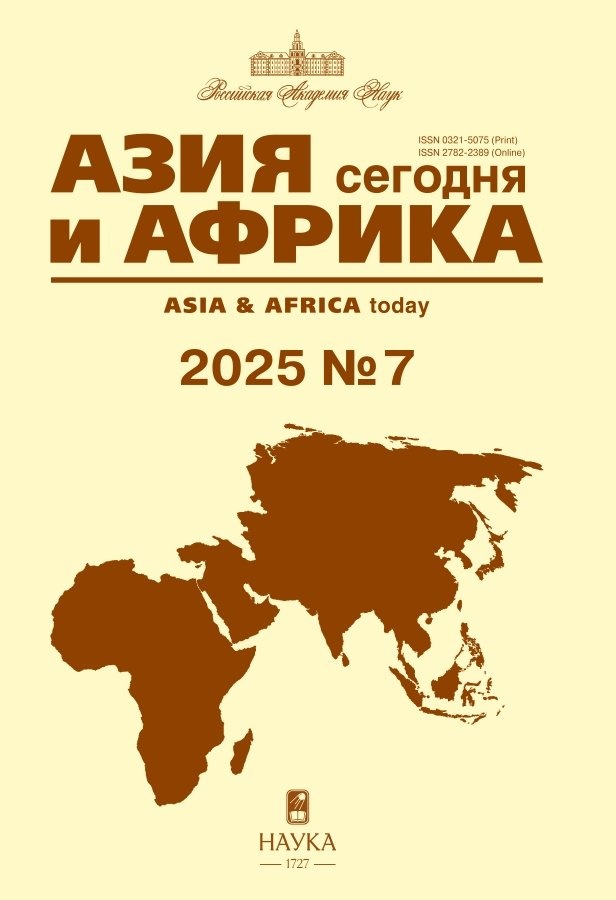US in Nepal: Real Aid or a Geopolitical Trap?
- 作者: Novinskii E.E1
-
隶属关系:
- MGIMO University
- 期: 编号 7 (2025)
- 页面: 55-62
- 栏目: Politics, economics
- URL: https://bulletin.ssaa.ru/0321-5075/article/view/686857
- DOI: https://doi.org/10.31857/S0321507525070077
- ID: 686857
如何引用文章
详细
Nepal is one of the least developed landlocked states, which has always depended on international aid, with the US being one of its main donors. Since the mid-2010s, a $500 million grant from the Millennium Challenge Corporation, the largest in Nepal’s history, has become the “flagship” project of bilateral cooperation. The 2017 agreement provoked mixed reactions among Nepali society and elites, who believed that several of its provisions violated national sovereignty and forced the state to act in accordance with the US Indo-Pacific Strategy. Despite assurances from Washington, ratification of the agreement took nearly 5 years and was achieved only due to US pressure. For now, it is difficult to assess the consequences of accepting American aid for Nepal, but it is safe to say that its southern neighbour India is the biggest beneficiary.
作者简介
E. Novinskii
MGIMO University
Email: e.e.novinskij@my.mgimo.ru
unior Researcher, Institute for International Studies, MGIMO University Moscow, Russia
参考
- Ледков А.А., Лунев С.И. История Непала. XX век. Москва: Институт востоковедения РАН, 2011. 384 c. Ledkov A.A., Lunev S.I. 2011. History of Nepal. 20th Century. Moscow. 164 p. (In Russ.)
- Yakovlev G.I. 1970. Economic Development of Nepal (1951–1965). Moscow. 164 p. (In Russ.)
- Skerry C.A., Moran K., Calavan K.M. 1991. Four Decades of Development. The History of U.S. Assistance to Nepal 1951–1991. Kathmandu: USAID. 389 p.
- Lamichhane D.P. 2023. American Engagement with Nepal: Concerns of China and India. Unity Journal, 4 (01), pp. 280–301. DOI: https://doi.org/10.3126/unityj.v4i01.52246
- Aleksandrov M.A., Granovsky A.E. 1973. Economic aid of capitalist countries to South Asia. Moscow. 383 p. (In Russ.)
- Khadka N. 2000. US aid to Nepal in the Cold War Period: Lessons for the Future. Pacific Affairs, 73 (1) (Spring), pp. 77–96. DOI: https://doi.org/10.2307/2672285
- Lunev S.I. 2019. Regionalisation and Integration: India and South Asia. Moscow. 305 p. (In Russ.)
- Nayak N.R. 2014. Strategic Himalayas: Republican Nepal and External Powers. New Delhi: Pentagon Press and Institute of Defense Studies and Analyses. 232 p.
- Bartenev V.I. 2022. Presidential initiatives as a tool to manage U.S. foreign assistance policies in the XXI century: from George W. Bush to Joseph R. Biden. Moscow University Bulletin of World Politics. Vol. 14, № 1. Pp. 64–113. Moscow. (In Russ.). doi: 10.48015/2076-7404-2022-14-1-64-113
- Kobonbaev M. 2006. CIS in criteria of “Millennuim Challenge” foundation: main issue – effective governance. Central Asia and Caucasus. № 2 (44). Pp. 122–137. (In Russ.)
- Shekhawat S. BRI in Nepal: An Appraisal. Observer Research Foundation. 10.06.2014. https://orfonline.org/research/bri-in-nepal-an-appraisal (accessed 24.10.2024)
- Adhikary A. 2022. Millennium Challenge Corporation: Interpretations and Implications for the National Security of Nepal. Unity Journal. Vol. III. Pp. 40–50.
- Shekhawat S. 2025. The MCC Debate and U.S.-Nepal Ties in Flux. Observer Research Foundation Issue Brief. Iss. 793. 25 p.
- Yin Q. MCC as a Tool of American Influence on Developing Countries. Мировая политика. 2022. № 4. С. 46–57. doi: 10.25136/2409-8671.2022.4.39171
补充文件









